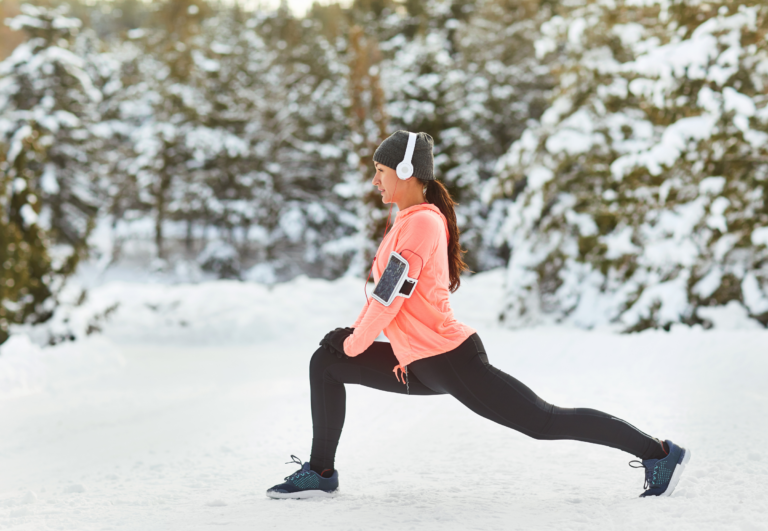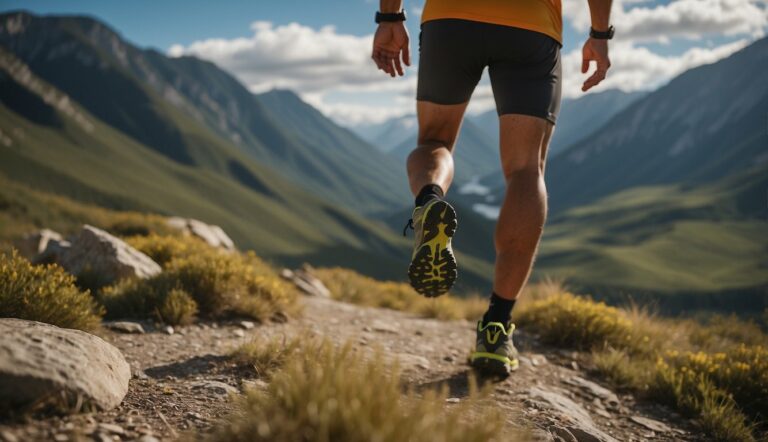Combining Trail Running and Cycling: Maximizing Endurance Sports Benefits
Combining trail running with cycling can significantly enhance your training regimen, providing a comprehensive approach to fitness that leverages the strengths of both disciplines. As a UESCA certified running coach, I’ve found that incorporating cycling as a form of cross-training can offer runners both a cardiovascular workout and a low-impact alternative to running, which can help reduce injury risk and promote recovery.
I recommend including cycling sessions to build strength and aerobic capacity without the added stress on your joints that comes from pounding the trails. By cycling, you’re able to maintain and even improve your cardiovascular endurance while giving your body a break from the repetitive impact of running. This strategy can be particularly beneficial when recovering from a race or an intense running workout.
In my experience, the key is to find a balance between running and cycling that suits your individual goals and fitness level. By using cycling for active recovery or to substitute a percentage of higher-impact training sessions, you can create a varied and sustainable exercise routine that optimizes performance and minimizes the risk of overuse injuries.
The Synergy of Running and Cycling

Combining running and cycling is an effective way to enhance endurance and muscular fitness. It’s a strategy that can lead to comprehensive physical improvements while mitigating injury risks.
Cross-Training Benefits for Runners and Cyclists
I always emphasize the importance of cross-training to my athletes. For runners, cycling offers a low-impact activity that reduces stress on the legs while maintaining cardiovascular fitness. Here’s a quick list of benefits that cross-training through cycling can provide to runners:
- Reduced Impact: It allows runners to give their joints a rest from the pounding of running.
- Muscle Recovery: Incorporates different muscle groups, promoting recovery through active rest.
- Endurance: Enhances cardiovascular conditioning without the added physical stress of running.
- Strength: Hill repeats on a bike can develop leg strength that translates to stronger running performance.
Conversely, runners can add valuable benefits to cyclists by:
- Core Stability: Running helps in developing a strong core, essential for efficient cycling.
- Overall Fitness: Positively impacts cardiovascular health and provides a change in exercise stimulus.
- Balance: Running can improve proprioceptive abilities and overall balance, crucial for technical cycling.
Understanding Combined Training Effects on Fitness
From my perspective, it’s crucial to acknowledge that combining running and cycling can lead to significant overall fitness gains.
Cycling builds endurance and muscular strength—especially in the quadriceps which can complement the hamstring and calf strength that’s built through running. Conversely, running aids in developing bone density and the use of stabilizing muscles that are less emphasized while cycling.
To optimize combined training effects on fitness, adherence to these principles is important:
- Volume and Intensity: Balancing the volume (how much) and intensity (how hard) across both disciplines is key to improvement without overtraining.
- 80/20 Rule: About 80% of training should be at a low intensity to build a strong aerobic base, with the remaining 20% at higher intensities.
As a coach, my goal is to guide athletes in creating a harmonious balance between running and cycling activities, which can lead to robust fitness development and improved athletic performance.
Designing an Integrated Training Program
In crafting a training program that marries trail running with cycling, I emphasize a balance of volume and intensity over time. It’s critical to carefully increase both to prevent overtraining and maximize performance.
Building a Balanced Training Schedule
Volume: Start with lower mileage for both running and cycling, and gradually increase. For example, if starting at 20 miles of running per week, complement with 30 miles of cycling, then raise each by 10% weekly.
- Monday: 5-mile run
- Tuesday: Rest or active recovery
- Wednesday: 30-mile cycle
- Thursday: Hill repeats (run)
- Friday: Easy cycle
- Saturday: Long trail run
- Sunday: Cross-training or rest
Intensity: Implement the 80/20 rule — 80% of training should be at a low intensity and 20% at high intensity. For high-intensity sessions, intersperse interval running with tempo cycling workouts.
Periodizing Training for Peak Performance
Periodization involves dividing the annual training schedule into phases, each with specific goals and workouts tailored to enhance performance leading up to key races.
- Base Phase (Duration: 8-12 weeks)
Focus on building aerobic fitness with increased cycling volume and steady runs.
- Build Phase (Duration: 6-8 weeks)
Introduce more intense workouts: interval runs and tempo bike rides to raise threshold power.
- Peak Phase (Duration: 3-4 weeks)
Highest intensity and volume before a taper. For instance, long trail runs combined with hill-climbing cycling sessions for leg strength and endurance.
- Taper Phase (Duration: 1-3 weeks)
Decrease volume, maintain some intensity to promote recovery while staying race-ready.
As a professional coach, I ensure these phases are clearly mapped out in the training plan, making adjustments for individual athlete recovery needs and performance improvements.
Optimizing Recovery and Avoiding Injury

To maintain peak performance in trail running and cycling, I focus heavily on structured recovery and diligent injury prevention. A balanced approach helps athletes stay healthy and improve over time.
Recovery Techniques and Strategies
Recovery workouts: These are essential for maximizing your training without overburdening the body. I advise:
- Cycling: Being low-impact, it serves as active recovery after a rigorous run, enhancing circulation while giving the joints a break.
- Running: Limit this high-impact activity to 2 days a week, preferably after a less intense cycling session to foster muscle recovery.
Rest Days: Incorporate full rest days into your schedule—no physical training, just mental and physical relaxation to allow for complete recovery.
Table: Weekly Recovery Plan
| Day | Activity | Duration | Intensity |
|---|---|---|---|
| Monday | Run (high-impact) | 30 minutes | High |
| Tuesday | Cycle (low-impact) | 45 minutes | Low |
| Wednesday | Rest Day | – | – |
| Thursday | Run (high-impact) | 30 minutes | High |
| Friday | Cycle (low-impact) | 60 minutes | Low |
| Saturday | Rest Day | – | – |
| Sunday | Active Recovery | Personal choice | Low |
Injury Prevention and Management
Avoiding injury: Here are my top tips:
- Vary your training: Balance high-impact running days with low-impact cycling sessions.
- Warm-up and cool down: Incorporate stretches for your quads, hamstrings, calves, and hips after every run.
- Follow the 80/20 rule: 80% of your workouts should be at a low to moderate intensity to avoid overtraining and the associated injuries.
Chart: Injury Prevention Tactics
| Technique | Reasoning |
|---|---|
| Diverse Workouts | Prevents overuse of the same muscles |
| Stretching Post-Run | Reduces muscle tightness and aids recovery |
| 80/20 Training Rule | Limits high-stress workouts |
By consistently applying these recovery and injury prevention strategies, I help athletes train smarter, not just harder.
Tailored Workouts for Dual-Sport Athletes
Incorporating both high-intensity cycling and tailored trail running into a training program can significantly enhance a dual-sport athlete’s performance. I ensure that these workouts build strength, endurance, and speed without causing overtraining.
High-Intensity Cycling Workouts
Cycling workouts serve as a low-impact way to develop cardiovascular fitness and muscular endurance. For high-intensity sessions, I recommend these two main workouts:
- Hill Workouts: Find a challenging incline and perform hill repeats. After a warm-up, cycle up the hill at a high intensity for 2-3 minutes before descending at an easy pace for recovery. Repeat for 4-6 sets depending on your fitness level.
- Intervals: On a flat course or stationary bike, start with a warm-up, then alternate between 30 seconds of intense sprinting and 1-2 minutes of easy cycling to recover. Aim for 10-15 intervals. This will enhance speed and mimic the pick-ups in pace trail running often requires.
Trail Running Training Specifics
Trail Running requires a blend of endurance and strength, particularly for technical terrains and elevation changes.
My focus in trail running workouts targets these specifics:
- Tempo Runs: A steady, sustained effort just outside your comfort zone, but not as fast as a sprint. This improves your lactate threshold, which is critical for prolonged climbs in trail and mountain running. A typical tempo run lasts for 20-30 minutes after a proper warm-up.
- Easy Runs: Balance out intense sessions with easy trail runs. These runs should be conversational in pace and allow for recovery while still building aerobic capacity. They serve to assimilate the high-intensity work and are as important as the harder workouts.
By alternating cycling and running workouts, you can mitigate injury risk from high-impact activities while still developing the necessary athletic qualities for excelling in trail running. Remember to factor in appropriate rest and recovery, as these workouts demand significant effort and strain on the body.
Gear and Equipment Essentials
When combining trail running and cycling, selecting the right gear is critical for both safety and performance. From the ground up, the right footwear and bicycles are foundational, while the right accessories can enhance your experience.
Choosing the Right Footwear and Bicycles
For trail running, the shoes should offer good traction, support and be suitable for the terrain. I advise opting for shoes specifically designed for trail running since they cater to uneven surfaces and often have more durable soles.
| Trail Running Shoes | Features |
|---|---|
| Outsole Grip | Look for a deep lug pattern for traction. |
| Upper Durability | A robust upper protects against trail debris. |
| Toe Bumpers | Extra protection in the toe area helps prevent injuries. |
Regarding bicycles, if I’m hitting the trails, a mountain bike with suspension and sturdy frame construction is necessary. For road cycling, a road bike designed for pavement use—with efficient pedals and gears for different inclines—is ideal.
| Type | Mountain Bike Features | Road Bike Features |
|---|---|---|
| Frame | Durable and can absorb shocks | Lightweight and stiff for speed |
| Suspension | Helps in technical terrains | Typically not needed |
| Tires | Thick with aggressive tread | Smooth and thin for less friction |
Essential Accessories for Safety and Performance
Safety comes first. For me, a well-fitting helmet is non-negotiable, and I always ensure my bike’s safety features, like brakes and lights, are in top condition. If I’m running in dim conditions, a high-visibility vest and headlamp are a must.
Performing at your best is tied to how well your gear fits and suits your particular needs. A proper bike fit from a reputable bike shop can prevent injuries and improve efficiency. An indoor trainer is also beneficial for year-round cycling training.
| Accessory | Use | Description |
|---|---|---|
| Helmet | Cycling & Running | For protection against impacts. |
| Visibility Gear | Running | Essential for low-light conditions. |
| Indoor Trainer | Cycling | Allows for training irrespective of weather. |
I also advise carrying hydration systems for long distances. For trail running, a hydration pack is convenient, while on the bike, bottle cages are practical. Investing in quality gear is worthwhile, as it boosts safety and can enhance performance.
Balancing Intensity and Volume in Training
When creating a training program, I blend trail running and cycling to cultivate endurance while managing fatigue. This approach safeguards joints from constant high-impact forces by incorporating the low-impact nature of cycling.
Weekly Training Breakdown:
- 80% Low Intensity: I ensure that 80% of training is conducted at a low heart rate to build aerobic capacity with minimized stress.
- 20% High Intensity: The remaining 20% is allocated to high-intensity workouts that improve power and speed.
I follow the 10% rule, progressively increasing my weekly running volume to stave off injuries. Meanwhile, cycling allows me to increase my weekly training time without overburdening my body.
Cross-Training Benefits:
- Reduced Joint Impact: Alternate days of running with cycling sessions.
- Improved Cardiovascular Health: Cycling at a controlled heart rate improves aerobic strength.
- Enhanced Cadence: Both discipline’s cadences help improve the other’s rhythm.
To monitor progression while preventing overtraining, I track my heart rate and perceived exertion. By attending carefully to my body’s signals of fatigue and recovery, I strike a balance that promotes sustainable fitness growth.






